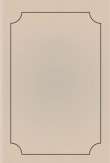You are here
قراءة كتاب Giorgione
تنويه: تعرض هنا نبذة من اول ١٠ صفحات فقط من الكتاب الالكتروني، لقراءة الكتاب كاملا اضغط على الزر “اشتر الآن"
friezes.
We know nothing of Giorgione's home life; he does not appear to have married, or to have left descendants. Vasari speaks of "his many friends whom he delighted by his admirable performance in music," and his death caused "extreme grief to his many friends to whom he was endeared by his excellent qualities." He enjoyed prosperity and good health, and was called Giorgione "as well from the character of his person as for the exaltation of his mind."[8]
He died of plague in the early winter of 1510, and was probably buried with other victims on the island of Poveglia, off Venice, where the lazar-house was situated.[9] The tradition that his bones were removed in 1638 and buried at Castelfranco in the family vault of the Barbarelli is devoid of foundation, and was invented to round off the story of his supposed connection with the family.[10]
NOTES:
See Appendix, where the documents are quoted in full.
Vasari gives 1478 (1477 in his first edition) and 1511 as the years of his birth and death. Crowe and Cavalcaselle, and Dr. Bode prefer to say "before 1477," a supposition which would make his precocity less phenomenal, and help to explain some chronological difficulties (see p. 66).
Zorzon da Castelfranco. La sua origine, la sua morte e tomba, by Dr. Georg Gronau. Venice, 1894.
Vide Repertorium für Kunstwissenschaft, xix. 2, p. 166. [Dr. Gronau.]
It would seem, therefore, desirable to efface the name of Barbarelli from the catalogues. The National Gallery, for example, registers Giorgione's work under this name.
The translation given is that of Blashfield and Hopkins's edition. Bell, 1897.
M. Müntz adduces strong arguments in favour of this view (La fin de la Renaissance, p. 600).
The name "Giorgione" signifies "Big George." But it seems to have been also his father's name.
This visitation claimed no less than 20,000 victims.
See Gronau, op. cit. Tradition has been exceptionally busy over Giorgione's affairs. The story goes that he died of grief at being betrayed by his friend and pupil, Morto da Feltre, who had robbed him of his mistress. This is now proved false by the document quoted in the Appendix.
CHAPTER II
GENERALLY ACCEPTED WORKS
Such, then, very briefly, are the facts of Giorgione's life recorded by the older biographers, or known by contemporary documents. Now let us turn to his artistic remains, the disjecta membra, out of which we may reconstruct something of the man himself; for, to those who can interpret it aright, a man's work is his best autobiography.
This is especially true in the case of an artist of Giorgione's temperament, for his expression is so peculiarly personal, so highly charged with individuality, that every product of mental activity becomes a revelation of the man himself. People like Giorgione must express themselves in certain ways, and these ways are therefore characteristic. Some people regard a work of art as something external; a great artist, they say, can vary his productions at will, he can paint in any style he chooses. But the exact contrary is the truth. The greater the artist, the less he can divest himself of his own personality; his work may vary in degree of excellence, but not in kind. The real reason, therefore, why it is impossible for certain pictures to be by Giorgione is, not that they are not good enough for him, but that they are not characteristic. I insist on this point, because in the matter of genuineness the touchstone of authenticity is so often to be looked for in an answer to the question: Is this or that characteristic? The personal equation is the all-important factor to be recognised; it is the connecting link which often unites apparently diverse phenomena, and explains what would otherwise appear to be irreconcilable.
There is an intimate relation then between the artist and his work, and, rightly interpreted, the latter can tell us much about the former.
Let us turn to Giorgione's work. Here we are brought face to face with an initial difficulty, the great difficulty, in fact, which has stood so much in the way of a more comprehensive understanding of the master, I mean, that scarcely anything of his work is authenticated. Three pictures alone have never been called in question by contending critics; outside this inner ring is more or less debatable ground, and on this wider arena the battle has raged until scarcely a shred of the painter's work has emerged unscathed. The result has been to reduce the figure of Giorgione to a shadowy myth, whose very existence, at the present rate at which negative criticism progresses, will assuredly be called in question.
If Bacon wrote Shakespeare, then Giorgione can be divided up between a dozen Venetian artists, who "painted Giorgione." Fortunately three pictures survive which refuse to be fitted in anywhere else except under "Giorgione." This is the irreducible minimum, ο αναγκαιοτατος Giorgione, with which we must start.
Of the three universally accepted pictures, first and foremost comes the Castelfranco altar-piece, according to Mr. Ruskin "one of the two most perfect pictures in existence; alone in the world as



